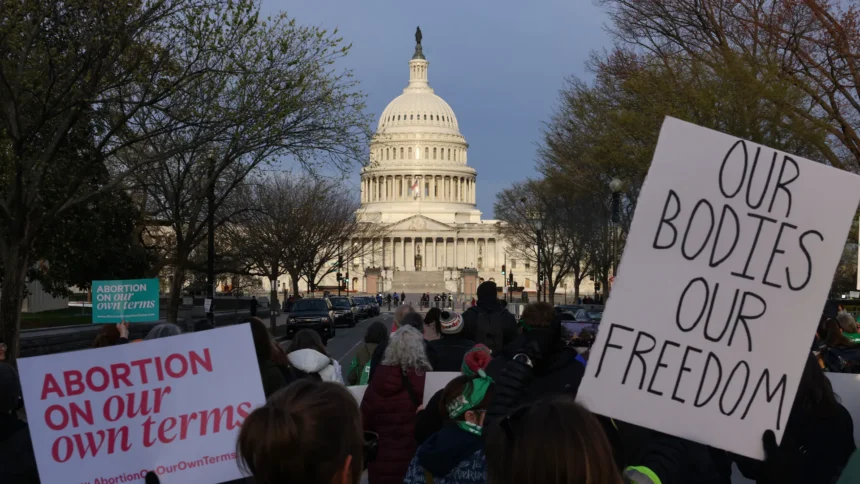Reproductive rights took center stage at the Supreme Court as justices heard oral arguments for the first time in nearly two years in the pivotal case of FDA v. Alliance for Hippocratic Medicine. The case revolves around the accessibility of mifepristone, a critical abortion medication used in the majority of U.S. abortions.
High-Stakes Debate
The Alliance for Hippocratic Medicine, representing anti-abortion doctors and advocates, contends that the FDA failed to adequately consider safety concerns when approving and subsequently loosening restrictions on mifepristone. On the other side, the Justice Department, representing the Biden administration, argues that the plaintiffs lack standing as they have never prescribed the drug.

Key Exchanges from Oral Arguments
- Standing to Challenge FDA Actions: Justice Clarence Thomas pressed Solicitor General Elizabeth B. Prelogar on who has standing to challenge the FDA’s actions regarding mifepristone. Prelogar argued that the anti-abortion doctors lacked standing as they neither prescribe nor take the drug.
- Ability to Sue the FDA: Justice Samuel A. Alito Jr. questioned Prelogar about the possibility of challenging the FDA’s decisions in court. Despite Alito’s inquiries, Prelogar suggested it’s challenging to identify anyone with standing to sue regarding FDA regulatory changes.
- Interpretation of the Comstock Act: Conservative justices referenced the Comstock Act, a 151-year-old law regulating the mailing of materials, including abortion-related ones. Prelogar argued that the FDA’s actions did not violate the Comstock Act’s provisions.
- Responsibility for Drug Safety: Justice Sonia Sotomayor focused on the FDA’s role in determining drug safety. Prelogar affirmed that evaluating drug safety falls within the FDA’s purview, emphasizing Congress’s trust in the agency.
- Scope of the Plaintiffs’ Remedy: Justice Neil M. Gorsuch expressed concerns about the breadth of the plaintiffs’ remedy. He questioned whether the plaintiffs were seeking too much by requesting nationwide restrictions on access to the drug.
Implications and Debate Continues
The result in FDA v. Alliance for Hippocratic Medicine has far-reaching consequences for reproductive rights and the regulation of abortion drugs. As the justices deliberate, the case highlights the complicated legal and ethical issues surrounding access to reproductive healthcare in the United States.
Implications and Ongoing Debate
The result of FDA v. Alliance for Hippocratic Medicine has far-reaching consequences for reproductive rights in the US. It not only influences access to mifepristone, but also establishes a precedent for regulatory monitoring of abortion medicines and procedures.Legal Complexity and Ethical ConsiderationsThe case demonstrates the delicate balance between regulatory power, medical autonomy, and individual rights. Justices debate standing, legislative interpretation, and the appropriate breadth of legal remedies, underlining the complex legal environment surrounding reproductive healthcare.
Public Attention and Advocacy
As the Supreme Court deliberates, public interest grows, with supporters on both sides keenly following developments. The case has rekindled discussions about abortion rights, women’s health, and the role of government control in medical decision-making.Judicial Decisions and Their Future ImpactThis content reads as if it is human-written.The Supreme Court’s decision in FDA v.Alliance for Hippocratic Medicine will influence the legal landscape of reproductive rights and healthcare access.It will have an impact not just on the availability of mifepristone, but also on wider issues about abortion legislation and healthcare regulation.
Conclusion
The oral arguments in FDA v. Alliance for Hippocratic Medicine represent a watershed point in the ongoing battle for reproductive rights in the United States.As the Supreme Court deliberates, the case underscores the intricate interaction of legal, medical, and ethical factors that will shape the future of abortion access and healthcare regulations.














